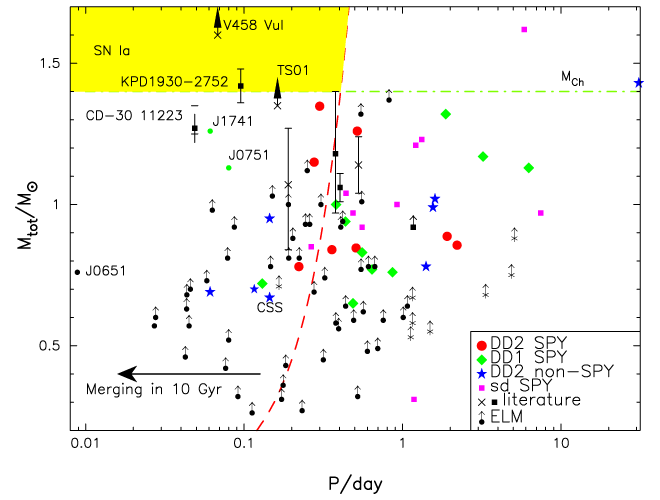
Figure 19: Known close binaries with two WD components, or a WD and a sd component. Red
circles mark double-line WDs found by SPY. Green diamonds are single-line WDs found by SPY.
Blue asterisks mark double-line WD discovered in surveys other than SPY. Magenta squares are
sd + WD systems from SPY. Black crosses and small squares are single-line WD and sd found by
different authors. Filled black circles are extremely low-mass WD (ELM) for which, typically, only one
spectrum is observed. For single-line systems from SPY we assume inclination of the orbit  ,
for other single-line systems we present lower limits of the total mass and indicate this by arrows.
Green circles are double-lined ELM WD suggested to be definite precursors of AM CVn stars Several
remarkable systems are labeled (see text for details). The “merger” line is plotted assuming equal
masses of the components. This is an update of the plot provided by R. Napiwotzki for the previous
version of this review.
,
for other single-line systems we present lower limits of the total mass and indicate this by arrows.
Green circles are double-lined ELM WD suggested to be definite precursors of AM CVn stars Several
remarkable systems are labeled (see text for details). The “merger” line is plotted assuming equal
masses of the components. This is an update of the plot provided by R. Napiwotzki for the previous
version of this review.
 ,
for other single-line systems we present lower limits of the total mass and indicate this by arrows.
Green circles are double-lined ELM WD suggested to be definite precursors of AM CVn stars Several
remarkable systems are labeled (see text for details). The “merger” line is plotted assuming equal
masses of the components. This is an update of the plot provided by R. Napiwotzki for the previous
version of this review.
,
for other single-line systems we present lower limits of the total mass and indicate this by arrows.
Green circles are double-lined ELM WD suggested to be definite precursors of AM CVn stars Several
remarkable systems are labeled (see text for details). The “merger” line is plotted assuming equal
masses of the components. This is an update of the plot provided by R. Napiwotzki for the previous
version of this review.
